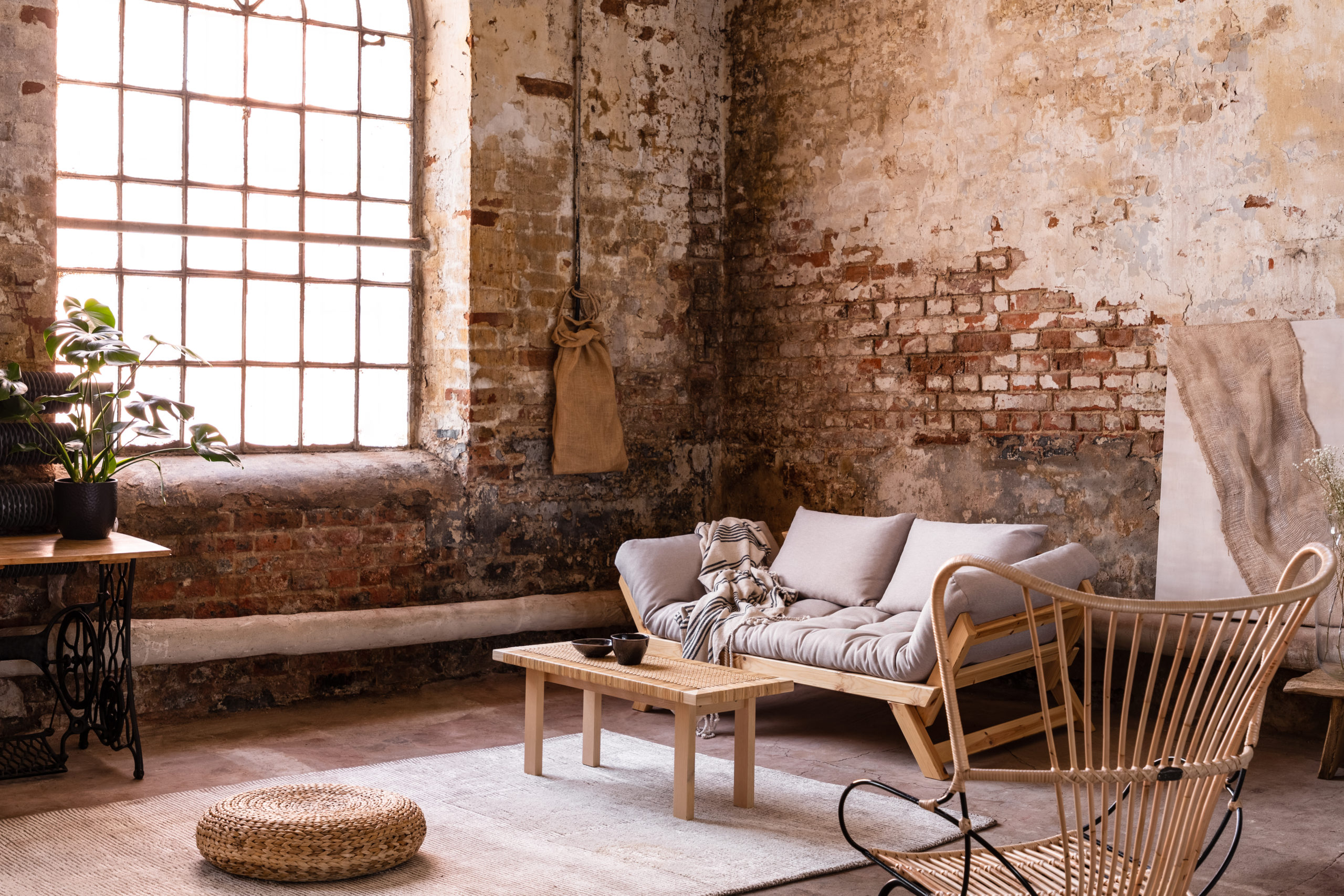Wabi-sabi: Finding peace and harmony
“Wabi-sabi” is the name of an interior design trend from Japan that has now also found its way into German living rooms. It stands for purism and authenticity. The room doesn’t need to be perfectly furnished. Much more important is that it creates a feeling of tranquility and harmony. Below, our expert shares some useful design tips with you and gives advice on how to install wood floors that go very well with wabi-sabi style rooms.
Tip 1: Get rid of clutter
The new wabi-sabi living trend brings peace and harmony into your own four walls by getting rid of everything that’s superfluous and unnecessary. Furnishings and other objects of daily use should fulfill a specific function and tell a story – of life, of the person that lives there. Visible signs of wear and tear and small defects are therefore explicitly allowed. Nevertheless, wabi-sabi style rooms don’t have to be uncomfortable. Light colors, earth tones and plenty of light create a warm and cozy ambiance. Also curtains, rugs and pillows made of natural materials are typical ingredients. Just place a handmade vase here, a Japanese tea set there – and you’re done with wabi-sabi style decor.
Tip 2: Use natural materials
The wabi-sabi way of life goes hand in hand with a conscious use of our resources. A real wood floor is therefore just the right choice for wabi-sabi rooms, especially since it can be renovated at a later date. It may also show a vivid grain and small blemishes such as knotholes or cracks. To ensure the flooring doesn’t shift and always remains in place, it should be bonded to the substrate over its entire surface. This way, also the footfall sound caused by walking is minimized since there is no separating air space between the flooring material and the screed.
Tip 3: Choose materials that ensure healthy living
Whether building and installation materials, windows and facades or insulation boards: All products and materials used inside and outside our homes should be healthy for living. A reliable indicator is the EMICODE® seal on the packaging. To obtain the much-coveted eco-label, manufacturers must submit their products to stringent tests at independent institutes. Long-term compliance with the predefined limit values is ensured by regular spot checks carried out by independent experts and test institutes – a major advantage of EMICODE® over other certification systems for health and environmental compatibility.

Photo: © Katarzyna Białasiewicz/123rf.com/GEV
Do You Have Questions?
If you have any questions on certain topics or want to contact us for another reason, please contact us by phone or email.
Phone: +49 (0)211 843 449 – 01
info@emicode.com
Share article on Social Media:
